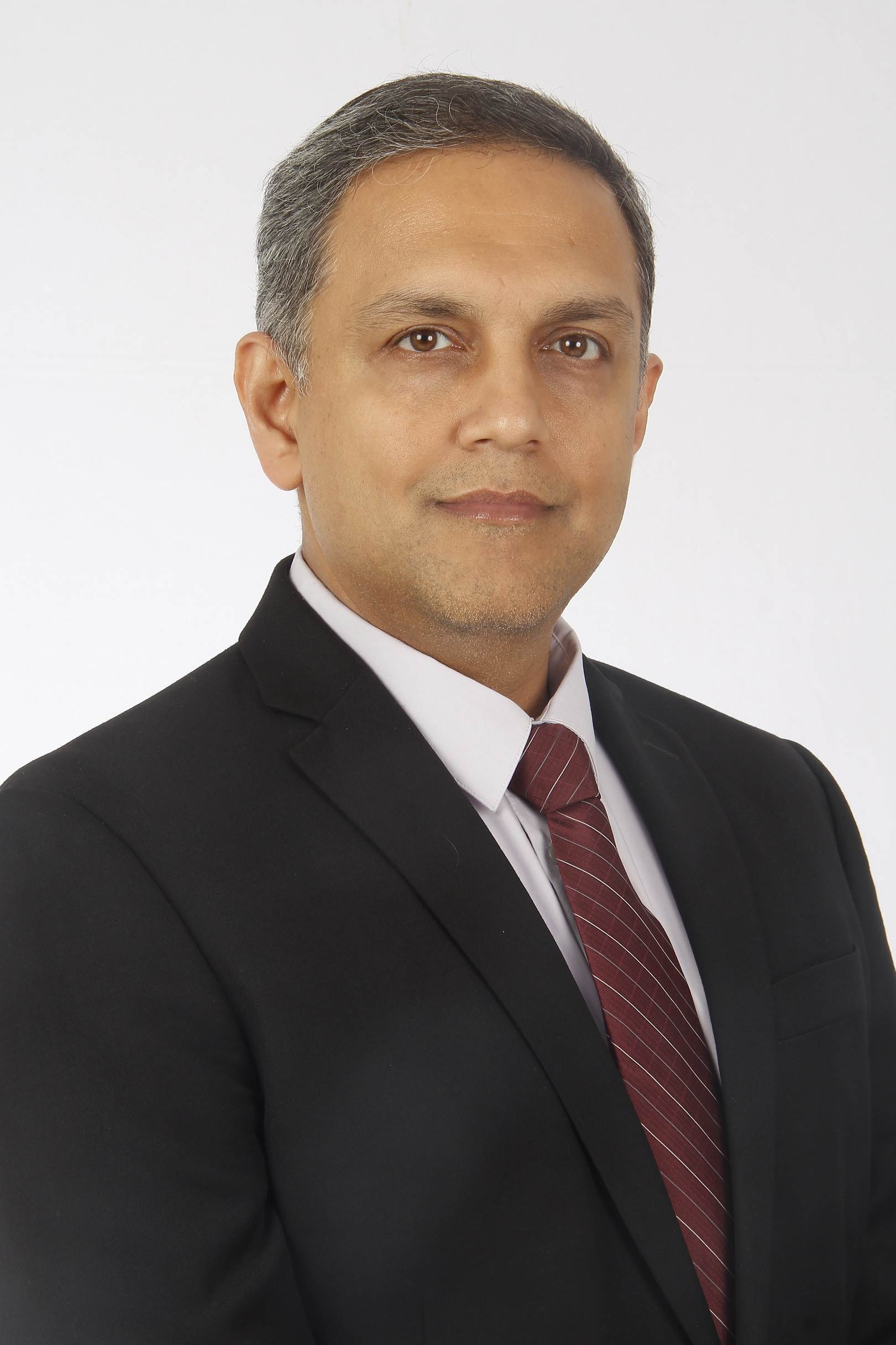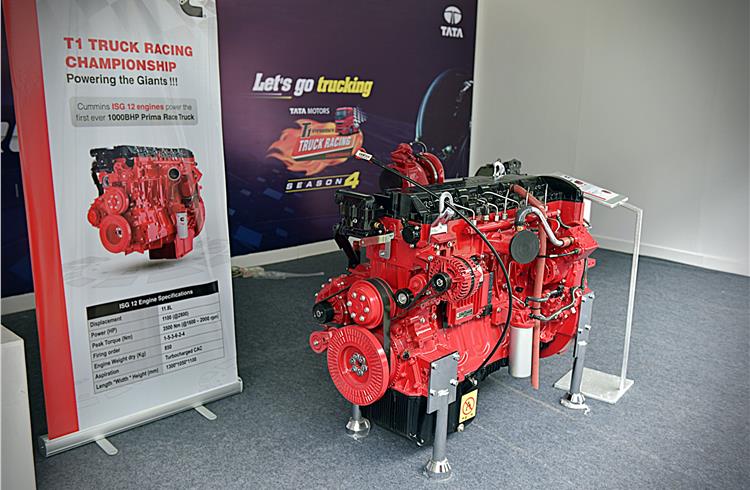‘We are bringing both SCR and EGR technologies to India.’
Sandeep Sinha, Managing Director, Cummins India, on the company’s readiness to cater to a BS IV-compliant market, eyeing future opportunities with BS VI, bringing the global heavy-duty ISG engine platform to India, and exploring entry into the light commercial vehicle engine industry with the 2.8-litre ISF engine.

With BS IV having gone mandatory and BS VI coming up by 2020, what are your product and technology plans for India?
The launch pad for after-treatment is BS IV and we are going to offer two technologies in India – SCR (Selective Catalytic Reduction) and EGR (Exhaust Gas Recirculation). Many companies have chosen either of them but we are going to bring both.
We believe in offering choice to our customers. We are the world’s largest manufacturers of BS IV engines and our experience tells us that, depending on certain applications and the total cost of ownership (TCO) of the customer model, both technologies are relevant – it’s not one over the other.
When are you launching these technologies in the Indian market?
We are launching SCR technology immediately while EGR will be launched in the coming months. We will have the complete portfolio of both the technologies.
Besides fuel systems, which will be launched with BS IV, we also have other components in our portfolio in India.
Have all your products been localised for the India market?
We have localised some of them because localisation is generally spread across a period of time. Our aim is to localise 100 percent but it is going to be a (long) journey. It is all about how much time we want to give to the products to stabilise. For example, all our engine platforms are completely localised. We firmly believe in localisation as this reduces our supply chain cost and the risk of foreign exchange impact. We are fully convinced it will be a 100 percent make-in- India product and help us aggressively move towards localisation.
As regards your engine portfolio, are you looking at some realignment with the changes in the market?
Yes, the example is the ISG engine (1000hp engine) which we have developed and is a new addition to our portfolio in India. (The ISG is a revolutionary global heavy-duty engine platform that Cummins has developed using a combination of patented technologies and advanced production techniques. It is available in 10.5- and 11.8- litre displacements, ranging from 310 hp to 512 hp (228- 382 kW) to meet a broad variety of on-highway market requirements and emissions standards.)
We believe that as the infrastructure improves in India and the efficiency of logistics companies improves, they will look for faster trucks and powerful engines.
A lot of designing of this engine has been done in India and local engineers have contributed for this project. We are confident that as the market matures, Cummins will offer the products like ISG in the coming years. We may also look for opportunities in smaller horsepower engines. We have BS VI-compliant engines in our portfolio globally and would like to bring them in India during the emission change in 2020.
Do you see Cummins offering smaller engines for passenger cars?
No, we do not see that primarily because of the way we develop our engines with heavy duty cycles; we believe that is our core area of strength. We will continue to focus on commercial vehicle engines albeit we may choose to get into light commercial vehicle engines. We have a strong product offering in our 2.8- litre engine which is called ISF and manufactured in China. We are talking with a few partners in India and exploring opportunities to bring that to India.
How do you see the transition of Indian market from BS IV to BS VI?
It will be challenging because I haven’t seen the shift from Euro IV to Euro VI being done anywhere in the world in such a short period of time. From our perspective, we truly like this as we believe as a company we have to create sustainable business. As emission standards go up, you build a sustainable business environment and want a positive move towards stringent emission norms. Secondly, we have products globally which are meeting those norms tested. However, like every technology we bring to India, we have to adopt it to the local duty cycle and meet challenges including factors like poor quality of fuel.
Considering the 36-month deadline for BS VI, has Cummins started working on those engines?
We are already working on these engines since they are already there in our system. We don’t know about other OEMs but if they have to launch their products in 2020, they have to work hard on the engines and we are already working.
Tata Motors is Cummins’ largest customer in India. Do you cater to other OEMs?
Yes, today all OEMs are our customers. Some buy engines from us while others buy components or after-treatment products. All of them buy turbochargers and all types of filters.
Any new investments planned in India?
We have invested in our fuel system business and also invested in our after-treatment business. As we move towards BS VI, the after-treatment is going to be much complex and we have got some exciting products for the market. We have the ‘Single Module’ after-treatment system. This is an ultra-high efficiency after-treatment system, a very compact product patented by Cummins, and we plan to bring it to India.
Cummins has been expanding its R&D team in India. Can you give us an overview of the business in India and the area of focus in the next 3-5 years?
The Cummins Group in India has a total business size of about Rs 11,000 crore and at present every part of the business represented worldwide is now in India. We primarily manufacture engines and have evolved as a company in the last 100- odd years. We have also now diversified into the component business.
The effort to develop components has intensified and sees strong linkage in emissions and performance. We have invested heavily in businesses like turbochargers and fuel systems and recently have become one of the largest manufacturers of after-treatment products which are required for compliance with BS IV and BS VI emission norms.
Is the Rs 11,000 crore business completely domestic?
We have about 35 percent of exports as India is used as an export base; we see this percentage as likely to grow further.
The most important part for us is to have zero-defect products in terms of quality, cost and delivery. Our manufacturing and supply chain setup in India is advanced with the most advanced manufacturing plants in the world and smart factory. This is giving us more and more opportunities because this is not an entitlement – you win because you deliver positive growth and we have been doing it consistently for more than a decade.
Every year, we have at least 3-4 major export projects that we deliver. As we speak, I can think of four major products that we are going to start including exporting large gensets. At present, all gensets less than 350KV are exported for Cummins around the world from India from our plant in a small town called Phaltan, near Pune. Now, at the same campus, we are going to make a 1 MW genset for export; this has come about due to our performance in the smaller genset.
We are able to do low-cost and highest quality when we moved production from Europe to India and our quality has improved. Also, our Indian R&D centre has become a global tech centre supporting all global business including engine, power and components. This is going to be unique and exciting.
This interview was first published in April 1, 2017 issue of Autocar Professional, when Sandeep Sinha was the COO for Cummins India.
RELATED ARTICLES
BRANDED CONTENT: 'We aspire to be among the leading sensors and electro-mechanical products manufacturer'
P. Parthasarathy, Founder & Managing Director, Rotary Electronics Pvt Ltd shares the company's commitment and vision to ...
‘Big opportunity for startups lies in products in India’: Detlev Reicheneder
As electrification levels the playing field, the focus on tech and R&D to bring innovative products is the mantra for st...
'I hope my journey makes people say — I can do this too'
Ranjita Ravi, Co-founder of Orxa Energies — the maker of Mantis e-bikes — shares the challenges of building a startup an...





 02 Feb 2018
02 Feb 2018
 17765 Views
17765 Views





 Autocar Pro News Desk
Autocar Pro News Desk




